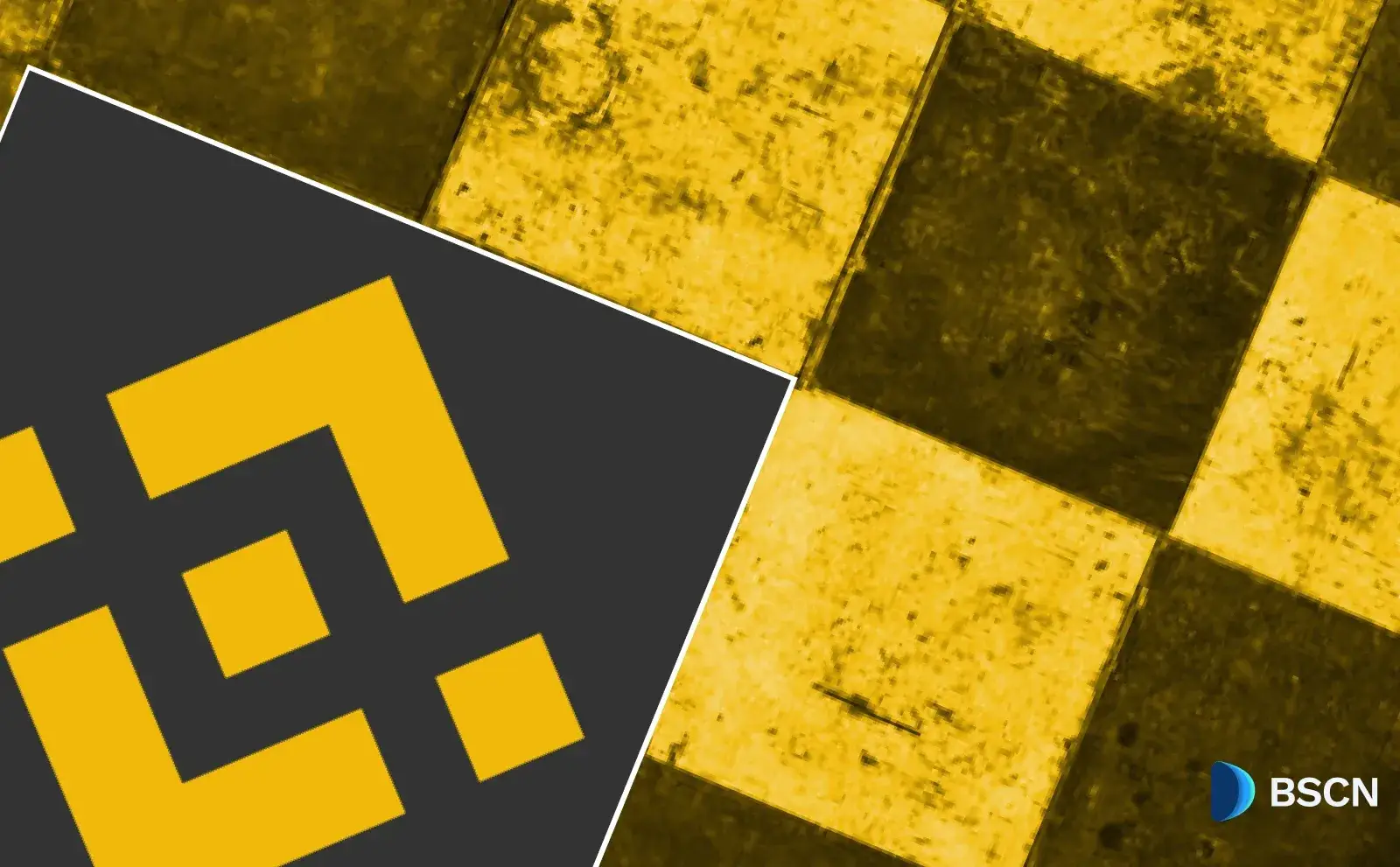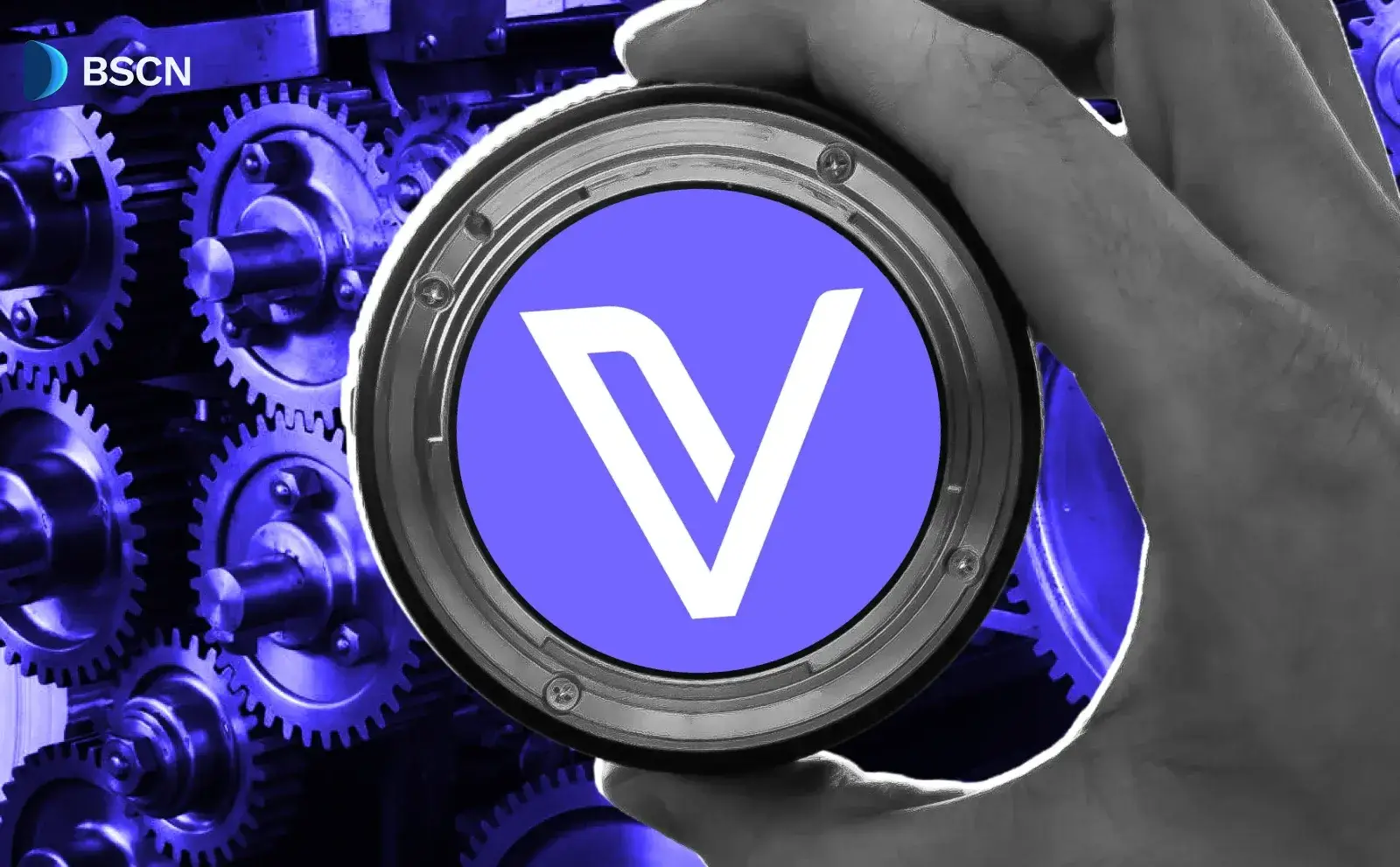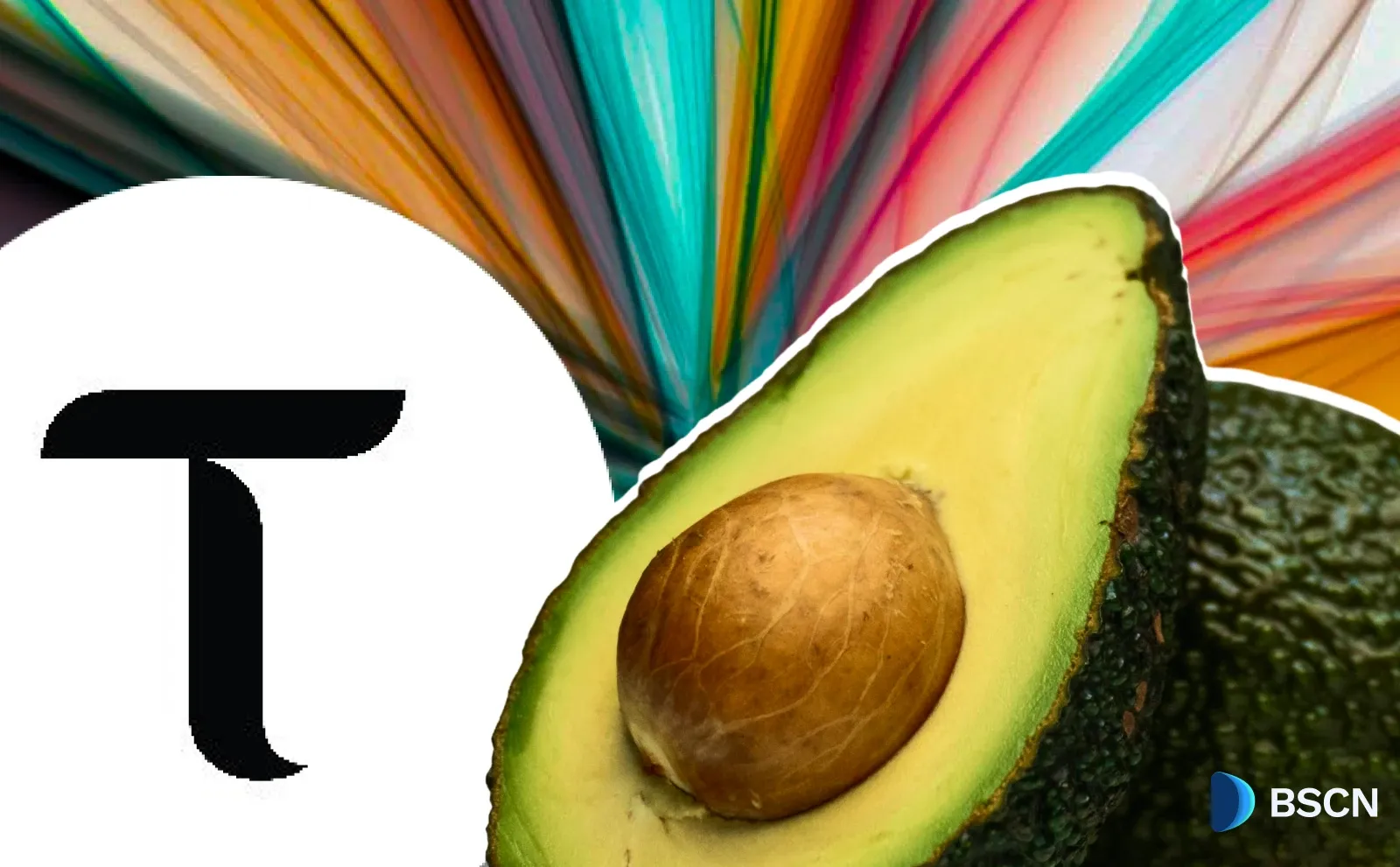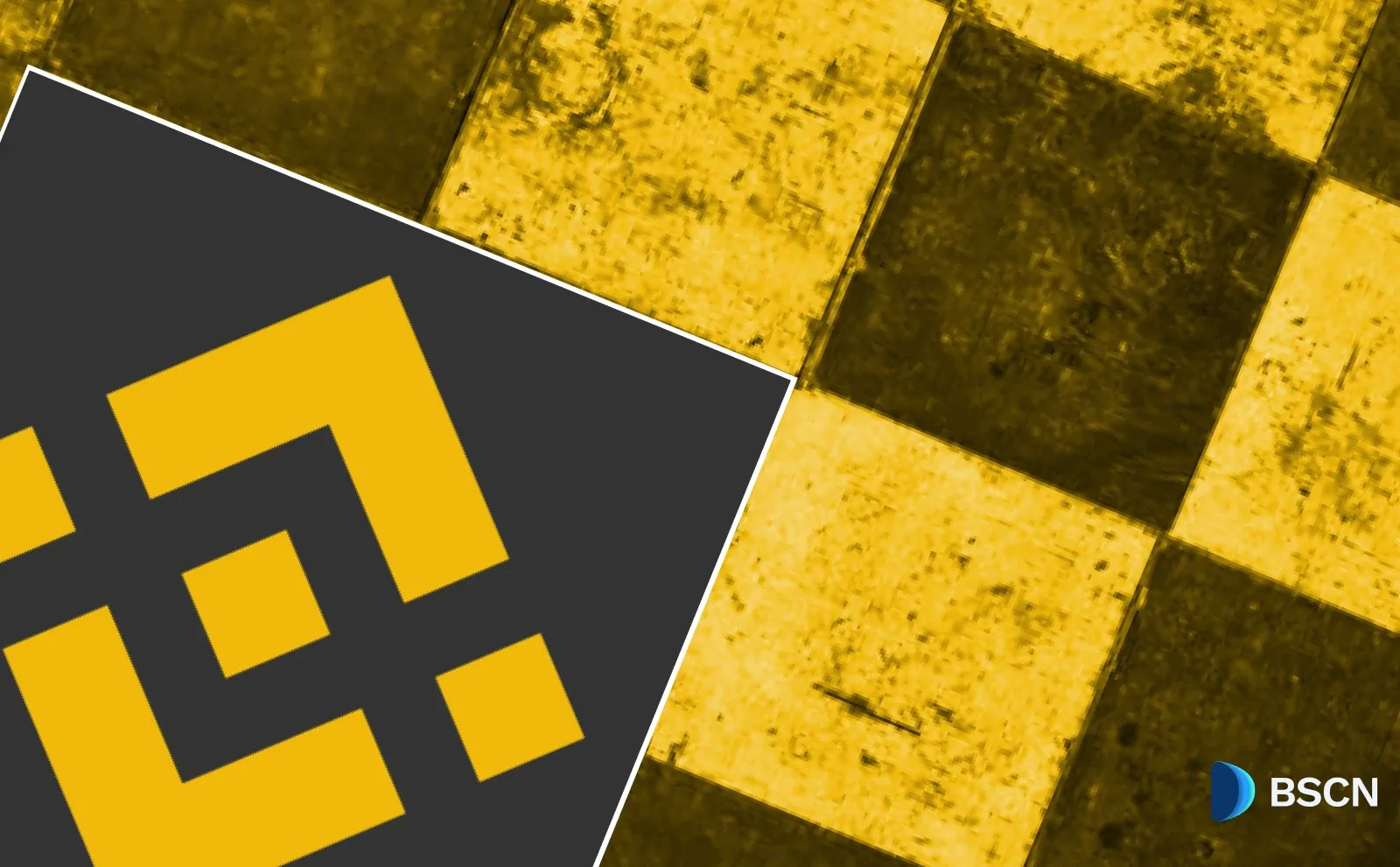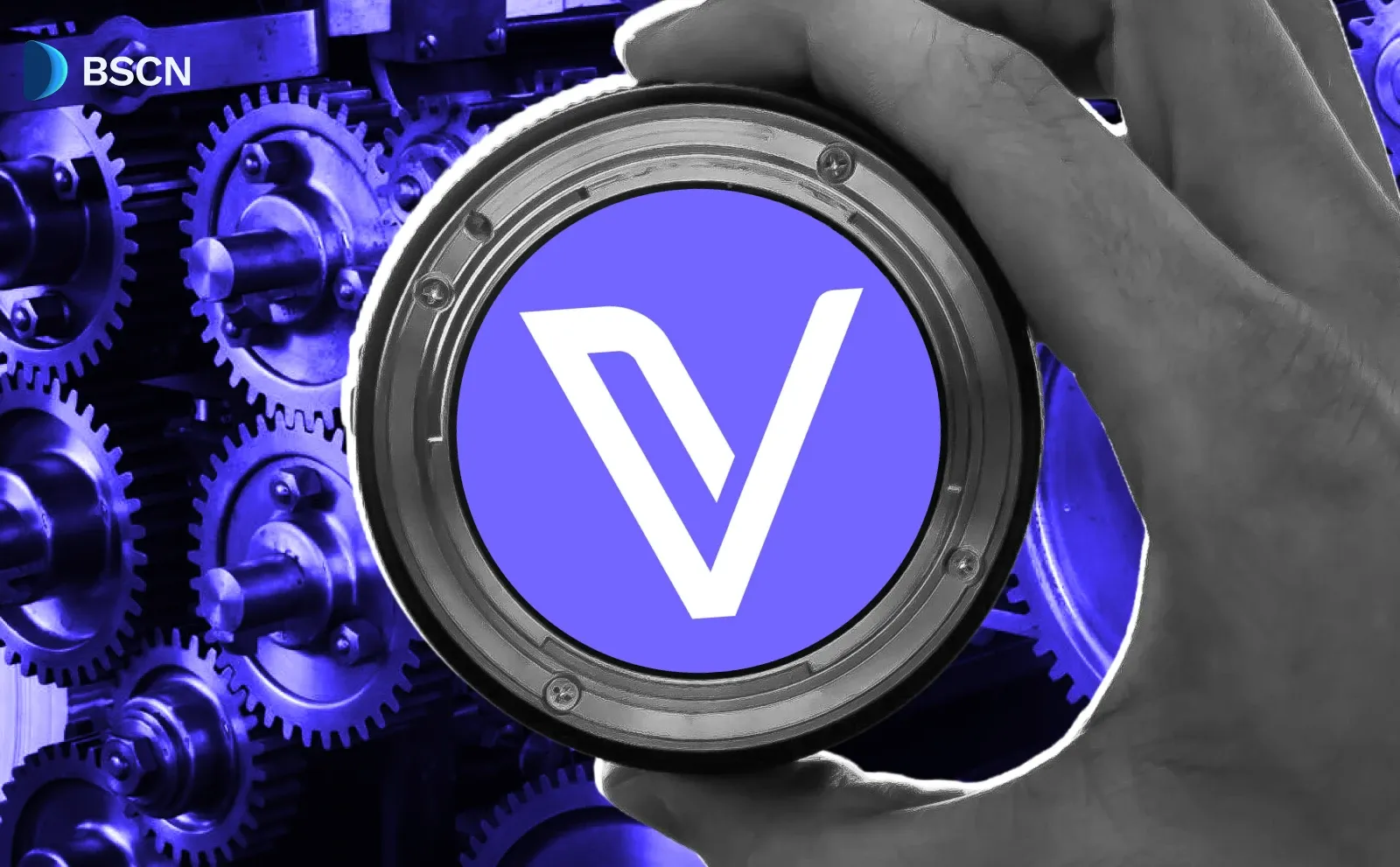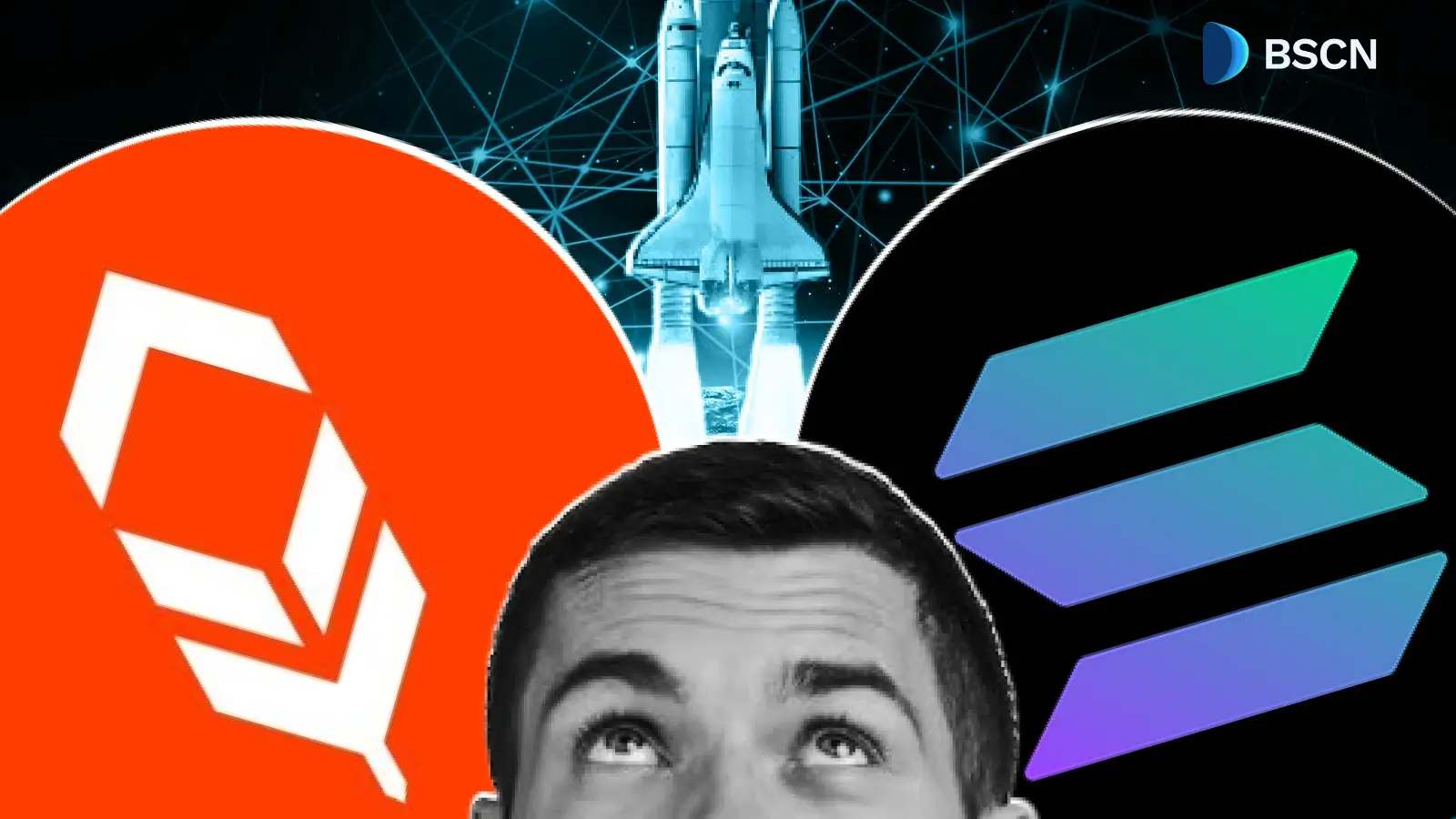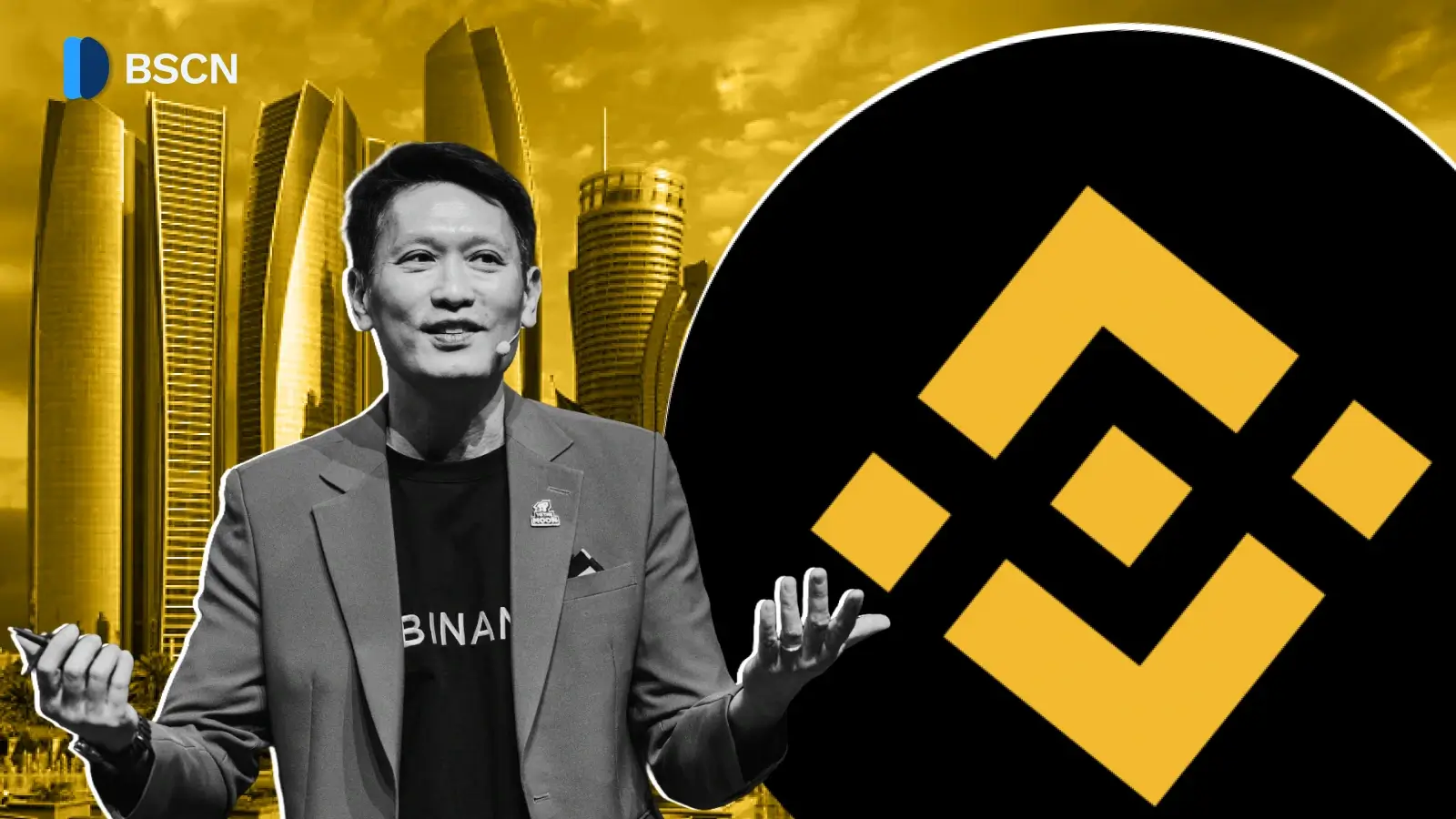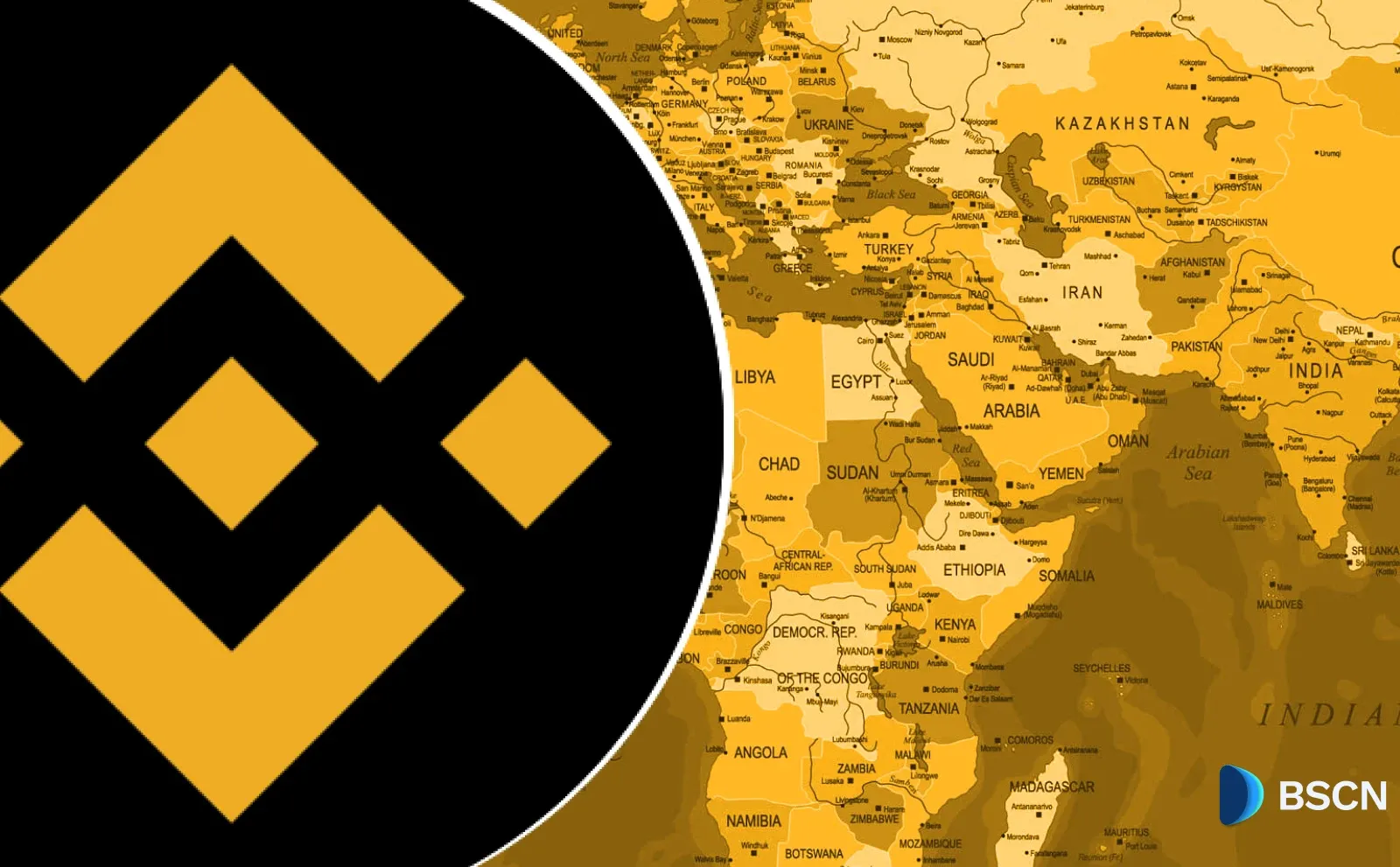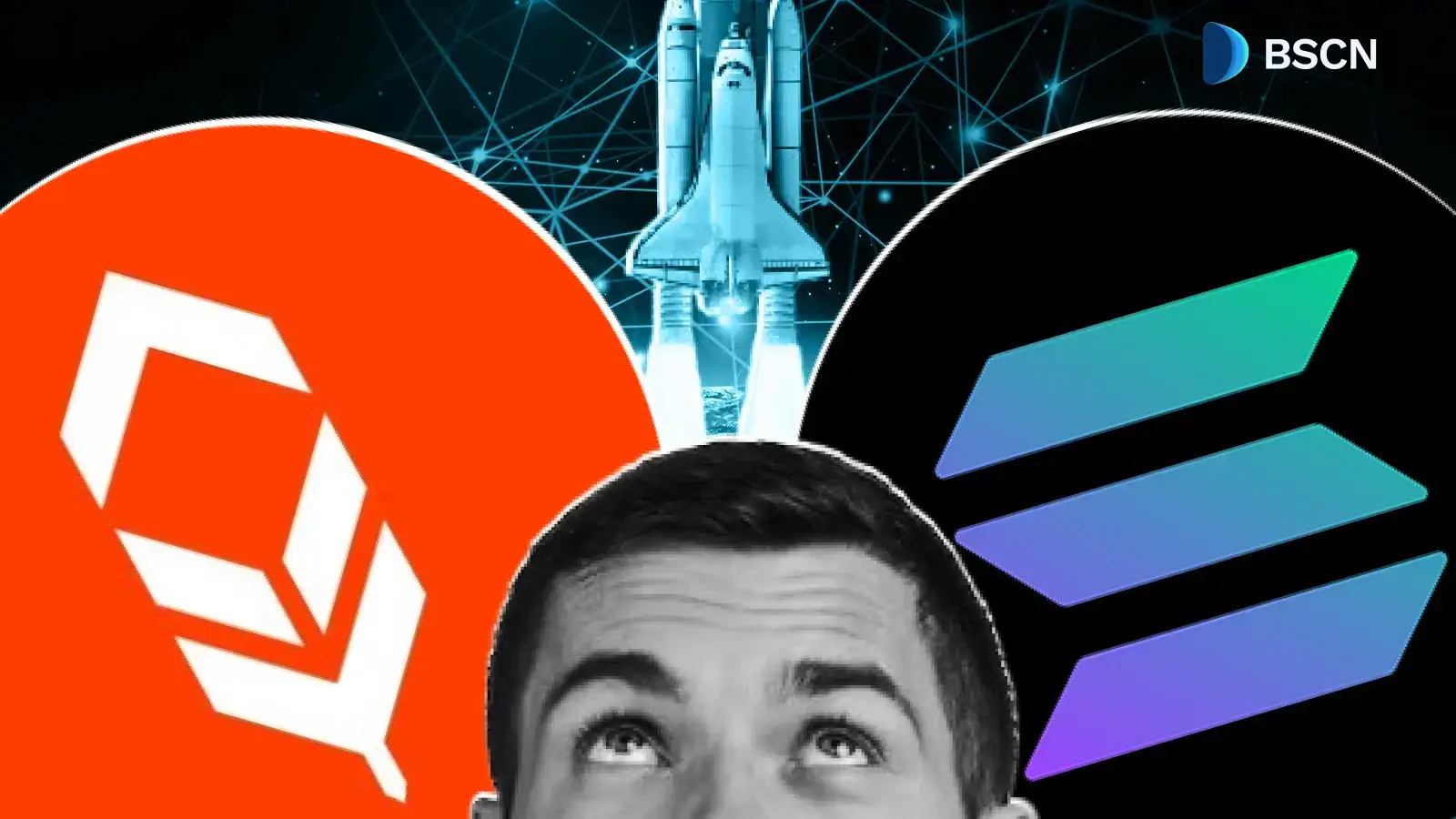Deepdive
(Advertisement)
Oasis Network and the ROSE Token: Understanding the Privacy-First Blockchain

Discover why Oasis is redefining blockchain privacy with confidential computing. Learn about ROSE token utility, scalability advantages, and innovative applications like private AI built on this privacy-centric blockchain.
Crypto Rich
April 2, 2025
(Advertisement)
Table of Contents
The Genesis of Oasis Network
The Oasis Network emerged in November 2020 as a Layer-1 blockchain focused on privacy and security. Founded by Dawn Song, a professor of Electrical Engineering and Computer Science at UC Berkeley, the network addresses key limitations in early blockchain systems—particularly data exposure and scalability bottlenecks.
Built using the Cosmos SDK, Oasis Network enables interoperability with the broader Cosmos ecosystem through the Inter-Blockchain Communication (IBC) protocol. This technical foundation supports its privacy mission, reflected in the token's name, "ROSE." The name references historical symbolism where roses represented secrecy and confidentiality—the Latin phrase "sub rosa" means "done in secret," aligning perfectly with the network's privacy-focused approach.
Since launch, Oasis has grown through innovations like Sapphire (the confidential EVM) and a global community composed of hundreds of thousands with nearly 300,000 followers on X alone, carving a niche as a leader in privacy and performance within the blockchain ecosystem.
Architectural Foundations: A Two-Layer System
Oasis Network distinguishes itself through a modular architecture that separates consensus from execution:
Consensus and ParaTime Layers
The network operates on two distinct layers:
- Consensus Layer: A decentralized network of validator nodes using Proof-of-Stake (PoS) that secures the network and validates transactions.
- ParaTime Layer: Hosts multiple parallel runtime environments tailored for specific use cases, like running a private DeFi application alongside a public game. This separation enables high scalability by processing transactions in parallel, preventing slowdowns that plague single-layer blockchains like Ethereum.
Unlike other scalability solutions like sharding or parachains, Oasis claims its discrepancy detection system—a method to spot inconsistencies across nodes with less overhead than traditional approaches—achieves equivalent security with a smaller replication factor, improving overall efficiency. This two-layer approach lets Oasis juggle heavy workloads while keeping the network responsive and cost-effective.
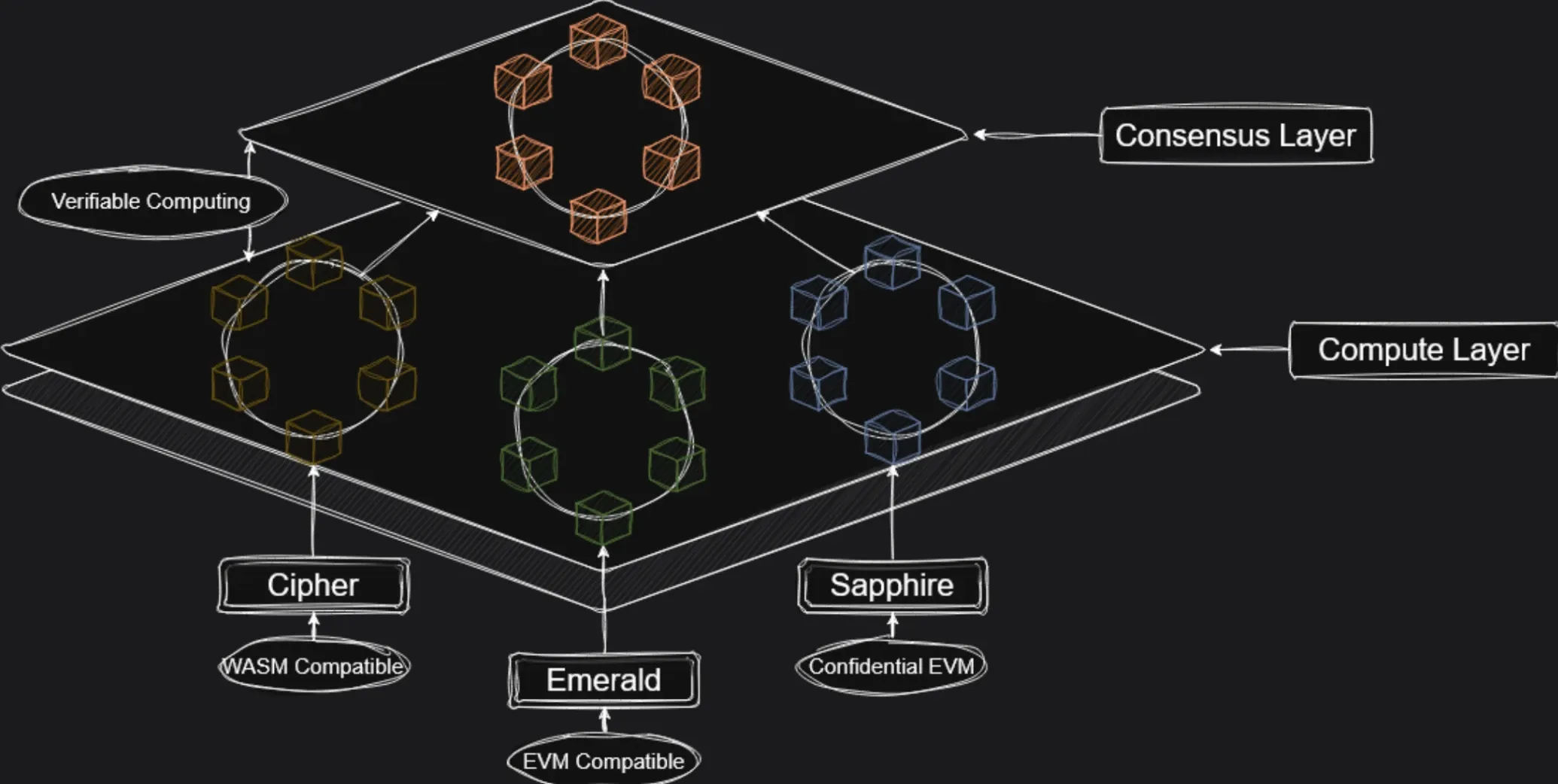
Privacy at the Core: Confidential Computing
Trusted Execution Environments
Oasis Network is the first blockchain to natively support confidential smart contracts using Trusted Execution Environments (TEEs). These secure enclaves (like Intel SGX) act like locked vaults, processing data securely so the network can't peek inside while still allowing verification of the computations. This powers applications like private DeFi, where user data stays hidden even during trades.
The Oasis Eth/WASI Runtime demonstrates this approach, creating an open-source confidential environment that enables private DeFi applications and tokenized data use cases.
Oasis Sapphire: The Confidential EVM
Sapphire represents a major innovation as the first production-ready confidential Ethereum Virtual Machine (EVM). This environment offers:
- Full EVM compatibility with "Smart Privacy," letting developers toggle settings from fully private to fully public
- Familiar Solidity development tools and workflows
This technology enables several unique applications:
- Confidential DeFi with MEV protection
- Private key management
- On-chain AI with confidential model training
- Fully on-chain gaming with hidden metadata
- Private voting and governance for DAOs
Oasis Privacy Layer (OPL)
The Oasis Privacy Layer extends privacy capabilities to existing applications on any EVM-compatible blockchain. This plug-and-play solution allows developers to add confidentiality to established projects without rebuilding from scratch—think adding privacy to an Ethereum NFT marketplace without rewriting the code. This approach bridges Oasis to ecosystems like Ethereum and Polygon, expanding its reach across the blockchain landscape.
Key Technical Features and Tools
Scalability and Cost Efficiency
The parallel processing capabilities of ParaTimes deliver:
- High transaction throughput
- Gas fees a fraction of those on congested networks
- Support for complex workloads—handling AI training or massive DeFi trades without a hitch
The network allows anyone to create custom ParaTimes (either open or closed), fostering diverse application development.
Interoperability
Oasis Network's foundation in the Cosmos SDK positions it for seamless cross-chain compatibility with other Cosmos-based networks, with ongoing efforts to enhance interoperability. Additionally, Sapphire's EVM compatibility creates direct pipelines to Ethereum's vast ecosystem, enhancing overall composability.
Development Ecosystem
The network offers several tools for developers and users:
For Developers:
- Oasis CLI: Command-line interface for token management, governance participation, and network interaction
- Oasis Nexus: Indexer tool providing blockchain data through a JSON-based API
For Users:
- Oasis Explorer and Scan: Monitoring tools for network activity across the consensus layer and ParaTimes like Sapphire (for confidential dApps) and Emerald (an EVM-compatible ParaTime for non-confidential apps like DeFi and NFTs, recently updated with improved performance and tooling)
- ROSE Wallet: Official non-custodial wallet available as a web application and browser extension, with mobile versions expected in 2025
Partnerships with Transak and ProtoFire (Oasis Safe) add infrastructure for custody, staking, and fiat on-ramps.
ROFL: Verifiable Off-Chain Computation
Oasis Network introduces Runtime Off-chain Logic (ROFL), a framework that extends blockchain capabilities by enabling verifiable off-chain computation. ROFL apps are stateless applications that can perform expensive or non-deterministic computations off-chain while maintaining blockchain security guarantees.
By leveraging Trusted Execution Environments (TEEs) like Intel TDX, ROFL boosts efficiency by offloading complex tasks, ensures flexibility for non-deterministic processes, and maintains privacy and verifiability through secure enclaves. This innovation addresses key limitations in traditional blockchain systems while preserving trust.
This framework benefits multiple stakeholders in the ecosystem:
- Developers: Build efficient, private, and trustless off-chain logic
- AI Builders: Deploy verifiable agents and private machine learning workloads
- DeFi Innovators: Create interoperable and scalable financial solutions
- Game Developers: Design private gaming experiences with verifiable outcomes
ROFL complements Oasis's modular architecture by further enhancing scalability while maintaining the network's privacy-driven approach.
ROSE: The Lifeblood of Oasis Network
Multi-Purpose Utility
The ROSE token serves several essential functions within the Oasis ecosystem:
- Transaction Fees: Pays for transactions, from simple transfers to dApp interactions like Ocean Predictoor
- Staking and Delegation: Secures the network through validator and delegator participation, with participants earning rewards
- Governance: Allows token holders to vote on network changes and policies (Planned)
- Ecosystem Integration: Works with DeFi platforms, including PancakeSwap (via cBridge) and illumineX on Sapphire, plus services like Transak and RocketX on the consensus layer
Tokenomics Framework
ROSE follows a structured economic model:
- Fixed Supply: Capped at 10 billion tokens total
- Initial Circulation: Approximately 1.5 billion tokens launched in November 2020
- Current Circulating Supply: Approximately 7.06 Billion ROSE
- Staking Allocation: 2.3 billion tokens reserved for staking rewards, automatically distributed to network participants
- Vesting Schedules: Additional tokens allocated to early backers, team members, and ecosystem development follow specific release timelines detailed in official documentation for full transparency
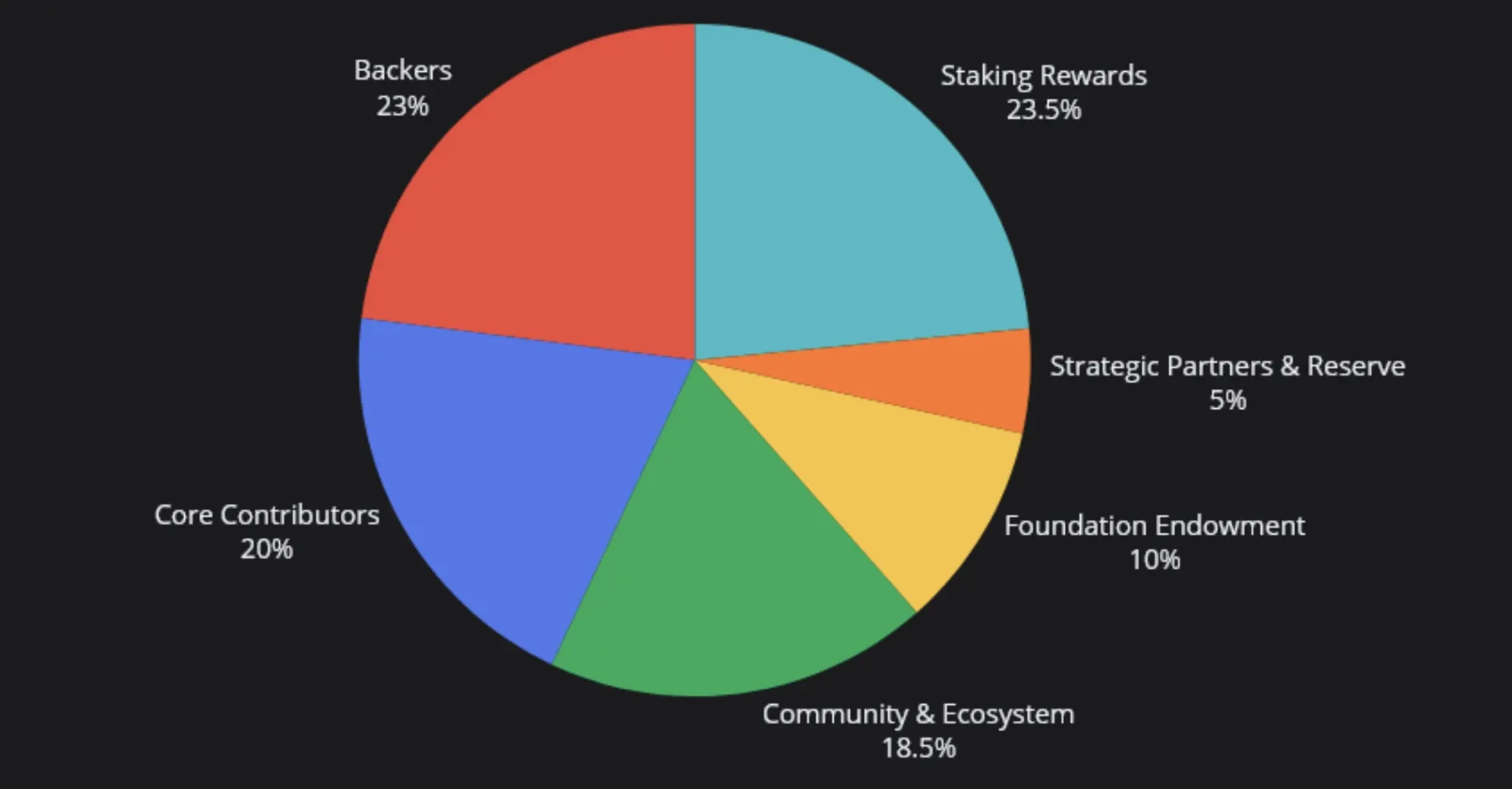
Liquid Staking Innovation
With stROSE, users can stake ROSE to secure the network while keeping their tokens liquid for DeFi—turning staking into a two-for-one deal that enhances overall token utility and composability. stROSE, a derivative token, represents staked ROSE and continuously compounds rewards, allowing users to earn staking yields while using their tokens in DeFi protocols. For example, users can provide liquidity on platforms like illumineX or borrow RUSD, a stablecoin, without unstaking, making ROSE a versatile asset in Oasis’s ecosystem.
Real-World Applications and Use Cases
Oasis Network supports diverse privacy-preserving applications:
Confidential Finance
Private lending platforms, undercollateralized loans, and trading mechanisms protected from MEV (Maximal Extractable Value) exploitation demonstrate how confidential contracts enhance traditional DeFi. ROFL further enhances these capabilities by enabling off-chain computations for complex financial models—like risk assessments for safer lending or yield optimizations for better returns—while keeping sensitive data private and ensuring results are verifiable on-chain.
Data Tokenization
Users can stake encrypted data with applications for analysis while maintaining control over access and usage—creating a new model for a responsible data economy. Think of earning rewards for sharing health data with researchers without losing privacy.
AI Integration
On-chain artificial intelligence models can leverage crowd-sourced data while preserving privacy, enabling secure, crowd-sourced AI training for better predictions. With ROFL, Oasis takes this capability further by supporting trustless AI agents that run off-chain, such as autonomous prediction models on platforms like Ocean Predictoor, with verifiable outcomes secured by TEEs (Trusted Execution Environment).
Gaming Innovations
Fully on-chain games can now hide strategic gameplay elements and asset metadata, creating more competitive and secure gaming environments. ROFL amplifies this capability by enabling private off-chain logic for complex game mechanics, like randomized loot drops or hidden player stats, while guaranteeing fair play with on-chain proof.
Private Governance
Confidential voting ensures fair DAO governance systems and unbiased participation in other decision-making events.
Non-Confidential EVM Applications
While Oasis excels in privacy-centric applications, the Emerald ParaTime supports non-confidential EVM dApps, such as decentralized exchanges, NFT marketplaces, and metaverse projects. With 2025 updates improving performance and enhancing compatibility with the latest Ethereum standards, Emerald offers developers a cost-efficient, high-throughput environment for Ethereum-compatible applications that prioritize performance over confidentiality.
Real-world implementations include Binance's CryptoSafe Alliance, which allows private sharing of threat intelligence data, and BMW's trials with differential privacy technologies.
Community and Development Roadmap
The Oasis ecosystem continues to grow through community engagement and strategic development:
- Backed by over 1,000 node operators and hundreds of thousands of community members, with nearly 300,000 followers on X (Twitter) alone
- The Oasis Foundation provides support for ecosystem growth initiatives
- Oasis Labs drives core technical development, including SDKs and network upgrades

The 2025 roadmap outlines plans for enhanced DeFi composability, deeper AI integration, and continued network performance improvements. A key focus is expanding the ROFL ecosystem, with GPU TEE support to power AI-driven applications and new developer tools in languages like TypeScript, Rust, Go, and Python, making ROFL more accessible across platforms including MacOS and Windows. Additionally, Oasis is prioritizing user experience (UX) by improving applications like the ROSE App, Oasis Blockvote, and Oasis Explorer with a new Oasis UI design system, making the ecosystem more intuitive for users. To streamline onboarding, the roadmap includes a native ROSE bridge to and from Ethereum (and other chains), alongside a trustless bridge to Sapphire, enabling native ROSE on other chains and easing liquidity flow to Sapphire for greater accessibility. In 2025, expect more tools for developers, seamless cross-chain apps for users, and a more user-friendly ecosystem.
Conclusion: Privacy as a Foundation for Innovation
In a world of increasing data breaches and privacy concerns, Oasis Network has established itself as a technical innovator by addressing privacy and scalability challenges that limit many blockchain platforms. Through its unique architecture, which combines confidential computing technologies with parallel execution environments, Oasis enables applications that maintain data security without sacrificing performance.
Oasis Network's privacy-centric approach positions it to support use cases where data protection, regulatory compliance, and computational efficiency are essential requirements. With the ROSE token providing economic incentives and governance capabilities, the network has created a foundation for continued growth within the expanding privacy-focused segment of the blockchain ecosystem.
Oasis invites developers and users to build on its secure foundation, creating a new generation of applications where privacy isn't an afterthought—it's built into the core. What privacy-first app would you build on Oasis? For more information visit their website or to stay updated, follow @OasisProtocol on X.
Read Next...
Disclaimer
Disclaimer: The views expressed in this article do not necessarily represent the views of BSCN. The information provided in this article is for educational and entertainment purposes only and should not be construed as investment advice, or advice of any kind. BSCN assumes no responsibility for any investment decisions made based on the information provided in this article. If you believe that the article should be amended, please reach out to the BSCN team by emailing [email protected].
Author
 Crypto Rich
Crypto RichRich has been researching cryptocurrency and blockchain technology for eight years and has served as a senior analyst at BSCN since its founding in 2020. He focuses on fundamental analysis of early-stage crypto projects and tokens and has published in-depth research reports on over 200 emerging protocols. Rich also writes about broader technology and scientific trends and maintains active involvement in the crypto community through X/Twitter Spaces, and leading industry events.
(Advertisement)
Latest News
(Advertisement)
Crypto Project & Token Reviews
Project & Token Reviews
Comprehensive reviews of crypto's most interesting projects and assets
Learn about the hottest projects & tokens
Latest Crypto News
Get up to date with the latest crypto news stories and events
